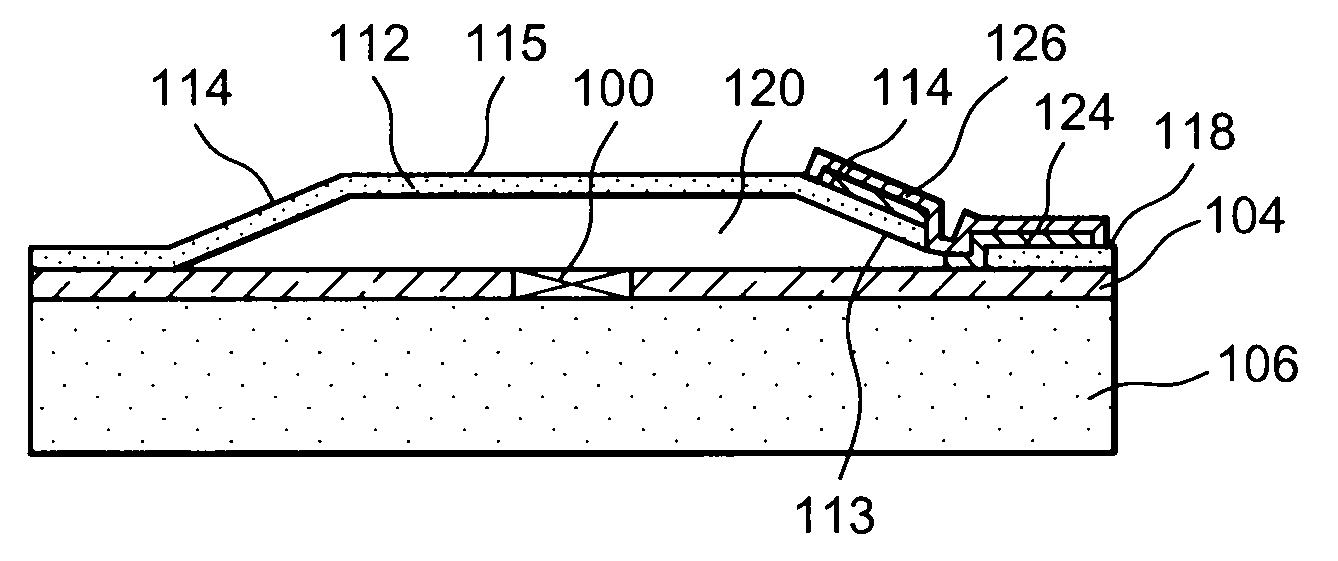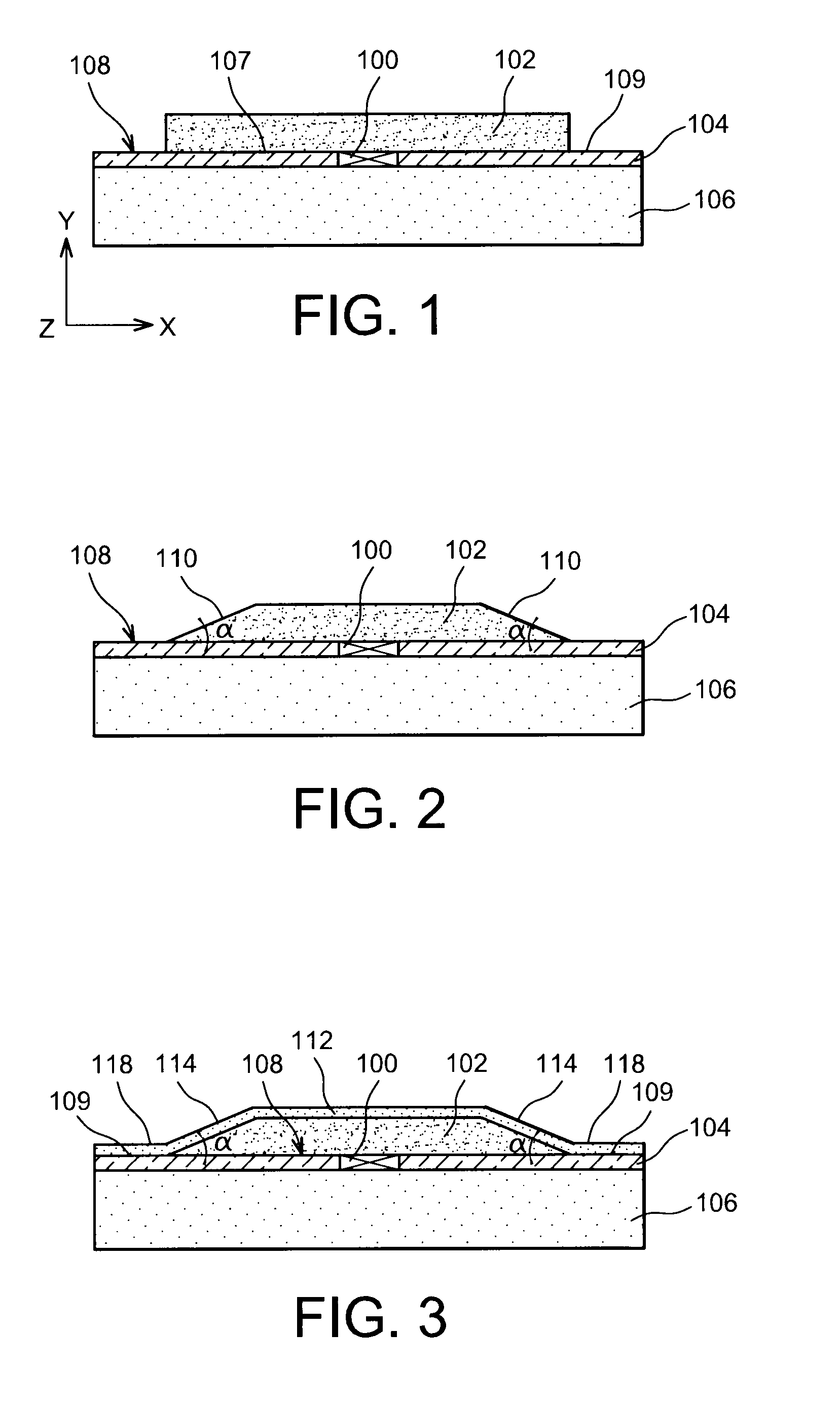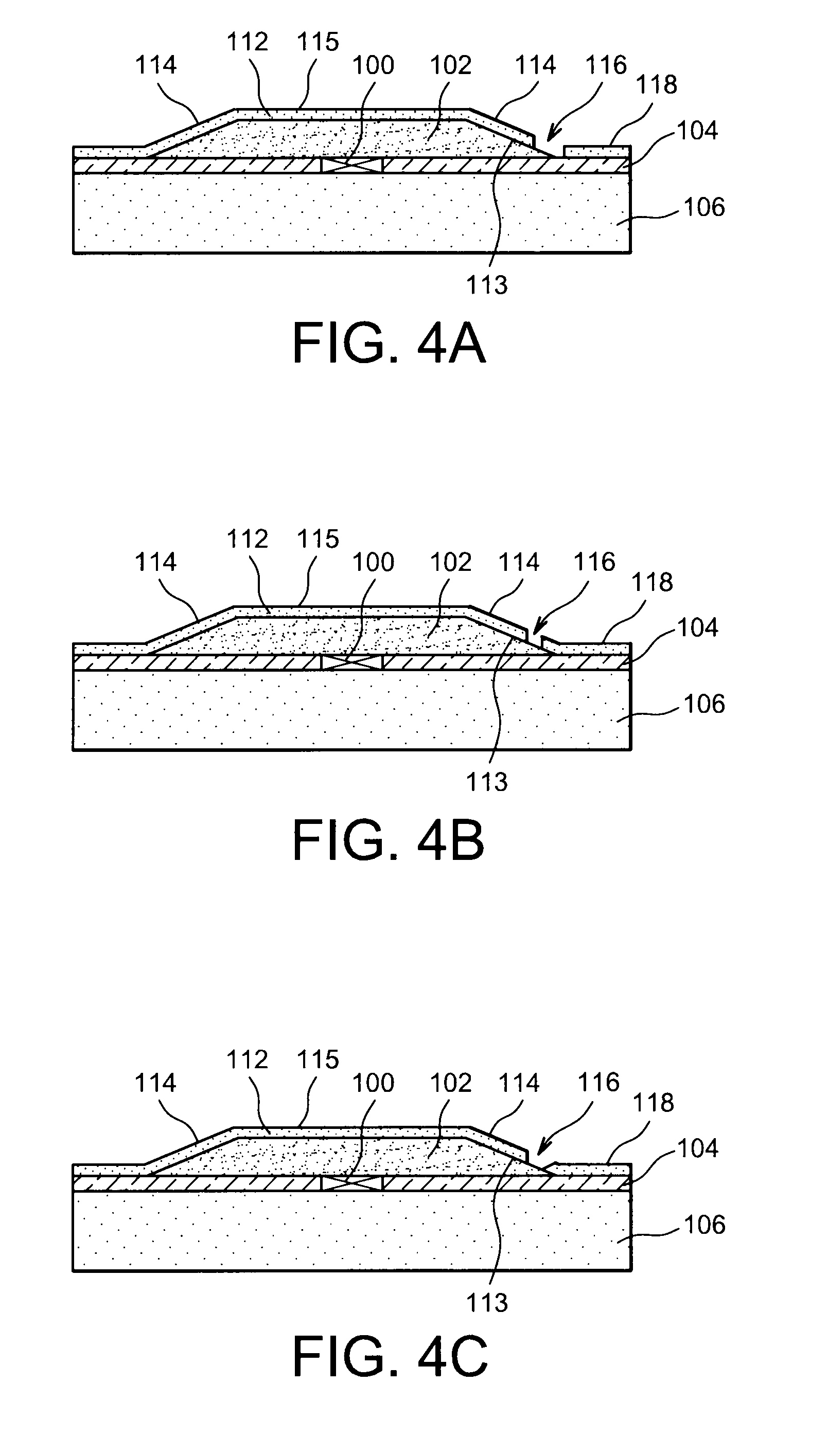Sealed cavity and method for producing such a sealed cavity
- Summary
- Abstract
- Description
- Claims
- Application Information
AI Technical Summary
Benefits of technology
Problems solved by technology
Method used
Image
Examples
Embodiment Construction
[0047]The present invention will be better understood on reading the description of example embodiments given purely as an indication and in no way restrictively, making reference to the appended illustrations in which:
[0048]FIGS. 1 to 9 represent the steps of a method to produce a hermetic cavity, forming the subject of the present invention, according to particular embodiment.
[0049]Identical, similar or equivalent portions of the various figures described below have the same numerical references, to make it easier to move from one figure to another.
[0050]The various parts represented in the figures are not necessarily represented at a uniform scale, in order to make the figures more readable.
[0051]The various possibilities (variants and embodiments) must be understood as not being mutually exclusive, and being able to be combined with one another.
DETAILED ACCOUNT OF PARTICULAR EMBODIMENTS
[0052]Reference is made to FIGS. 1 to 9, which represent steps of a method of production of a ...
PUM
 Login to View More
Login to View More Abstract
Description
Claims
Application Information
 Login to View More
Login to View More - R&D
- Intellectual Property
- Life Sciences
- Materials
- Tech Scout
- Unparalleled Data Quality
- Higher Quality Content
- 60% Fewer Hallucinations
Browse by: Latest US Patents, China's latest patents, Technical Efficacy Thesaurus, Application Domain, Technology Topic, Popular Technical Reports.
© 2025 PatSnap. All rights reserved.Legal|Privacy policy|Modern Slavery Act Transparency Statement|Sitemap|About US| Contact US: help@patsnap.com



